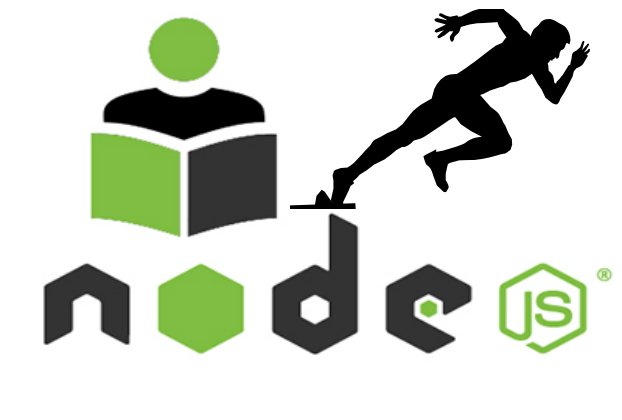Node.js is the most popular framework in computer programming domain today, according to the most recent Stack Overflow Developer Survey, and its popularity just keeps growing. Node.js uses an event-driven, non-blocking I/O model that makes it lightweight but efficient, perfect for data-intensive real-time, concurrent access applications that are capable to run across distributed devices.
The Javascript world has moved insanely fast in the past few years. The flexibility and ease of JavaScript coupled with the power of a fast async loop and a thriving community have only increased the productivity and power of Node.js developers.
The 2018 HackerRank Developer Survey revealed that Node.js is not only the second most popular framework with employers, but also that there is a large gap between the number of Node.js developers that employers need and the number of developers who actually have the essential skills.
This article breaks down the 7 essential skills every “would be” Node.js professional developer should ponder. Use this list to make sure you’re keeping your skills fresh, or to see what it takes to level up and become a highly sought after Node.js Web Developer.
1) Node.js
To grasp and excel in node.js development you should first learn node.js itself, that is, the need for a substantially different framework, the concept and the execution mechanism which differentiates it from the contemporary frameworks. As you’ve read above; Node.js uses an event-driven, non-blocking I/O model that makes it lightweight but efficient – perfect for data-intensive real-time, concurrent access applications that are capable to run across distributed devices. For instance thousands or may be tens of thousands of users or devices can concurrently access the node application in order to both input or output the required data. All this occurs in almost real time because of the inherent architecture of node.js. Node uses nothing but, the same old, javascript for both server and client side development, hence enormously reducing the learning curve of the developers if they are already well up in “any” web-based technology.
An important attribute of Node.js is the Web programming event model. Most existing technologies are meant to take “big gulps” of data for every request and response. In other words, a whole page of data might be sent to a server (form submit) – even if there are only tiny changes. These technologies are optimized to use larger chunks of data with fewer events. On the contrary, Node.js is designed to work with more interactivity, that is, smaller chunks of data responding to many more events.
2) Server-side frameworks
One of the most essential dependency of any Node.js web application will be the server-side framework. There are many to choose from, if you haven’t yet picked a favorite because each framework has substantial sized slices of market share. Express is not only the most popular, but also helps kick start the development of web applications. In addition, it’s well maintained and works really cool.
3) Node.js Package Manager (NPM)
Node.js package management is one of the most fluid parts of the Node.js ecosystem. Node.js uses modules as the basic building blocks to structure the code of a program. It is the brick for creating applications and reusable libraries called packages. Brick after brick and a super-fast, CPU-usage-efficient, and near real-time web application is ready provided, of course, that it is well designed and developed.
Node.js helps to solve the dependency-hell problem by making sure that each installed package will have its own separate set of dependencies, thus enabling a program to depend on a lot of packages without involving conflicts. The Node way, in fact, involves extreme levels of re-usability and hence maintainability, whereby applications are composed of a large number of small, well-focused dependencies. No more want a specific functionality? just remove one or more modules and here you go – thanks to the absence of strong coupling.
Node Package Manager provides two main functionalities:
*- It provides online repositories for node.js packages/modules which are searchable on search.nodejs.org
*- It also provides command line utility to install Node.js packages, do version management and dependency management of Node.js packages.
A package contains all the files needed by a module and modules are the Javascript libraries that can be included in Node project as per the project’s requirement. NPM is used to install all the dependencies of a project through the package.json file.
NPM has so far more than 590,000 registered packages. The average rate of growth of this number is 291/day which supersedes every other package registry.
4) Front end development
Although a large part of the Node.js Web application deals with the back-end Node.js code, usually using a server-side framework like express.js, you are likely to also have to go into the front end from time to time to craft the user experience. Having a substantial experience of front-end technologies, like Client-side JavaScript, JQuery, HTML and CSS and in addition, knowing how to build the code which is suitable to the back-end node.js environment is strongly recommended.
There are a handful of but excellent client-side frameworks available like angular, React and Vue, which are the most popular and work in real conjunction with the back-end code to give the promising real-time experience.
5) Databases
Your Node.js code won’t be enough to run your web application. You’ll also need to know how to store dynamic data in a persistence layer like a database. There are way too many database systems to list here, but often the best way to interact with them in Node.js is through an Object-Relational Mapping (ORM) tool.
One popular option is Sequelize, which gives you a consistent API to interact with regardless of the type of SQL database you are connecting to. This not only gives you a convenient way to define your table schema and update records, but also gives you the option to easily switch your back-end database engine if needed.
Mongoose is one of the popular ORMs for MongoDB if you prefer a NoSQL option. The bottom line is that you should have a substantial knowledge of one of these database solutions.
6) MVC pattern
By Implementing MVC does not mean to just creating folders for models, views, and controllers. You also need to divide your code and logic according to MVC philosophy. The code inside your models should be strictly confined to defining database schema. Developers generally relax the fact that the models should also have code that will perform CRUD operations. Any function and business logic that is specific to that model should be present inside the model class itself. This will essentially ensure encapsulation as well as abstraction and hence increase the maintainability of the code.
A common mistake is the temptation to dump all of the business logic into controllers to have a quick look at one place whenever required. Controllers should only invoke functions from models or other components, transfer data between components, and control the flow of the request, whereas the view folder should only have code to convert objects into HTML-centric human-readable form. Programming logic like formatting data or sorting or filtration should be avoided inside the view. Again, keeping the views clean will ensure abstraction which will help you change views without altering any other component.
7) Cloud platforms
Finally after having developed and well-tested your node.js application, you’re going to plan to make it live. May be you have already got a good domain name. But is it quite simple and straight forward to get it hosted by any web host? I have to say “No” because of the inherent architecture of node.js. You may check with the giant cloud platforms like AWS, Azure or Google but that might require more infrastructure configuration and budget than you expect. So the way to go could be smaller cloud providers, at least for the beginning and till a substantial time has passed. You may find Heroku and Netlify as the better options to deploy your Node.js applications to a cloud platform easily and cost-effectively.




